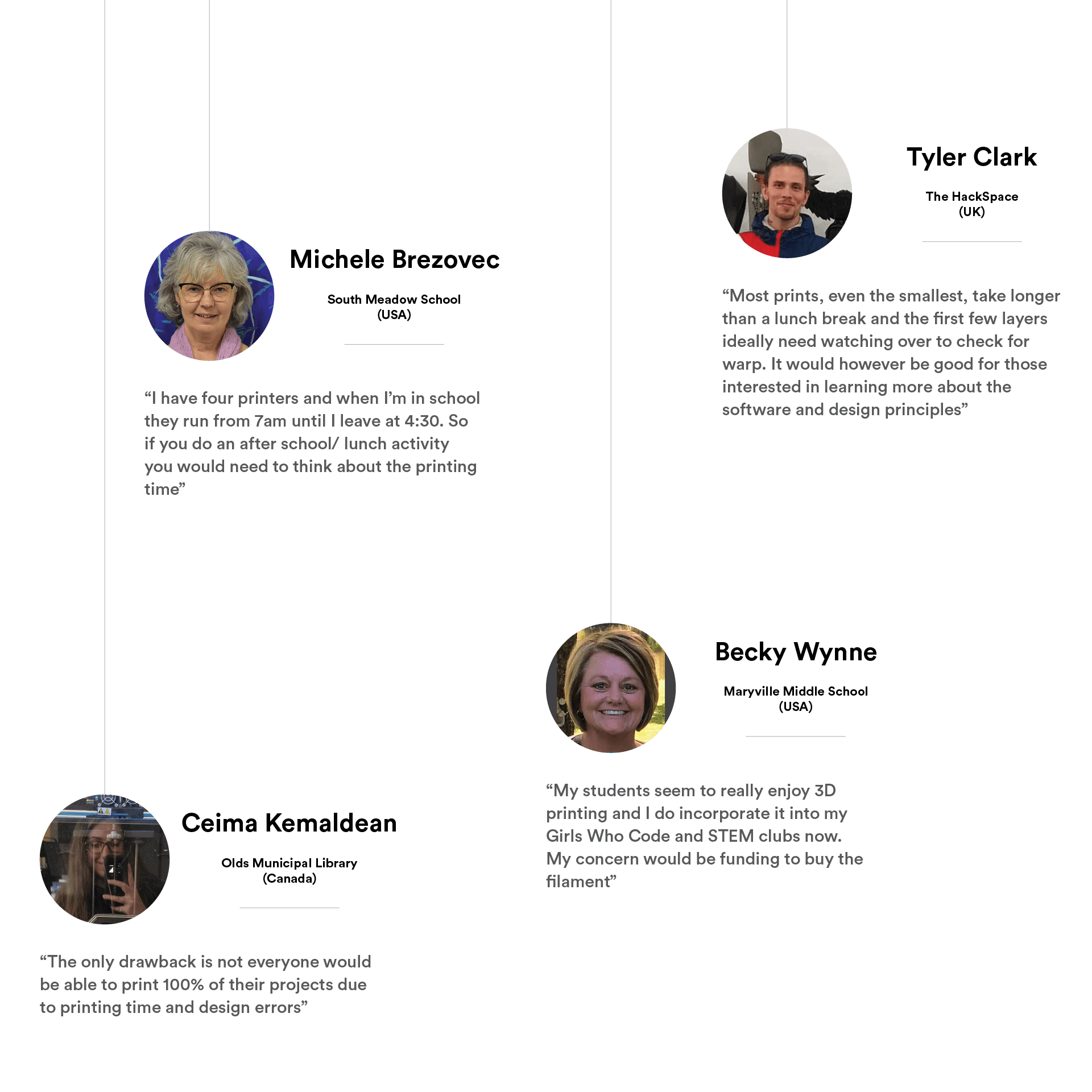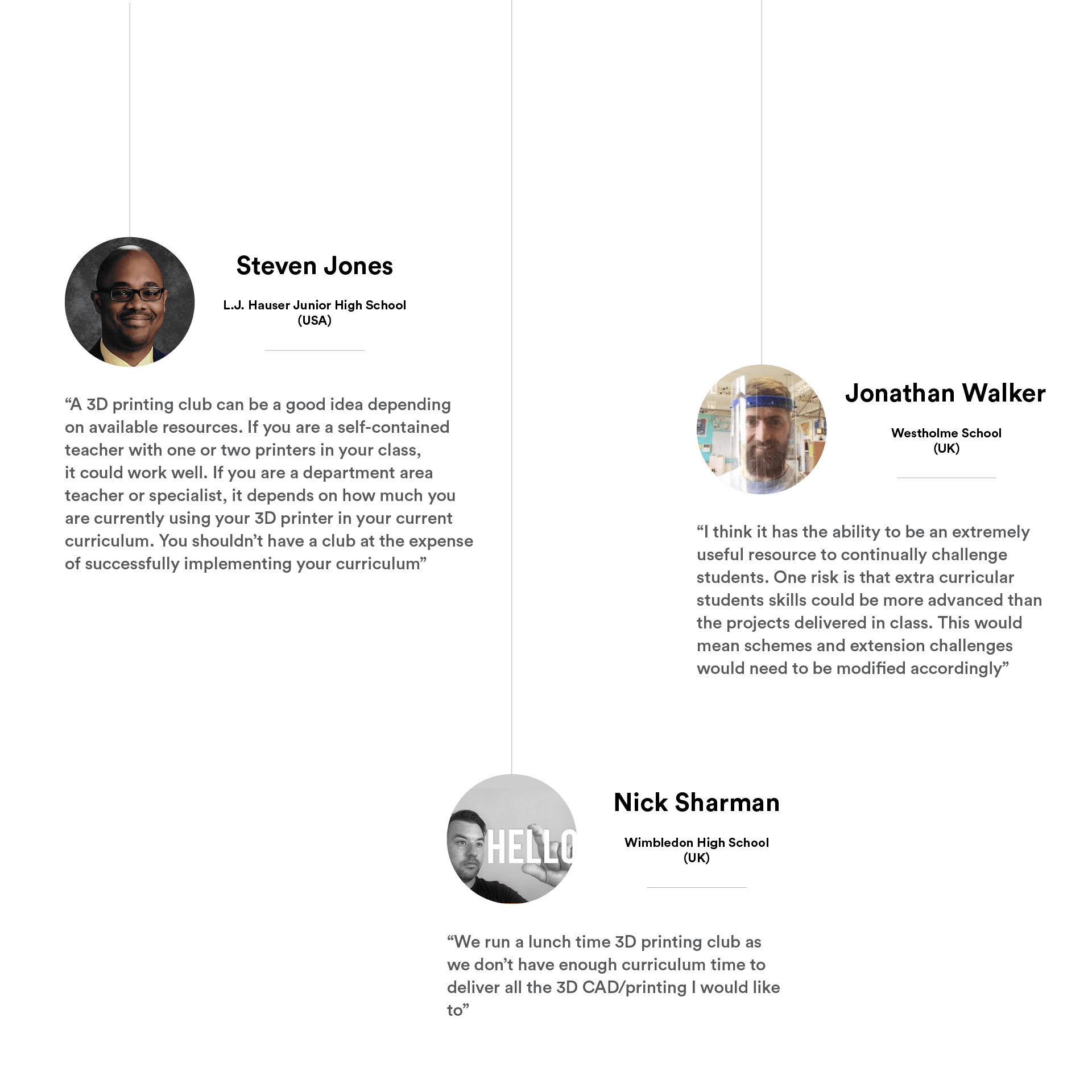4 Considerations when Starting a 3D Printing Club
In today's blog, we're going to be addressing a very popular question: "What do I need to consider when starting a 3D printing club at my school?".

10th June 2020 • Tips
To address the topic, we reached out to our community of pioneer teachers to get their thoughts and advice on 3D printing clubs. From the feedback we received, there’s no doubt that 3D printing clubs can have huge benefits in schools – to enhance learning but to also give students the opportunity to play, explore and follow their passions.

There are however, several factors that need to be thought through when starting a 3D printing club and below you will find our top 4 considerations!
Tip 1: Have a Purpose

When beginning a 3D printing club, it’s totally fine to be making trinkets and toys. In fact, it can be a great way to engage students, whilst educating them about the 3D printing process. But a 3D printing club could be so much more! Imagine if students combined waste materials (excess wood, plastic packaging etc) with beautiful 3D printed forms and began an upcycling movement in your community. Or if you partnered with a disability organisation to make assistive devices for people in need. You might just be surprised at how engaged students are when designing and making for purpose.
Tip 2: Set Constraints

Due to the time it takes to 3D print, it’s unlikely that students will be able to 3D print a model every time they attend the club. Even if you were in a position to do this, the filament cost could become extremely excessive. Prior to starting a 3D printing club, ensure you set some constraints. These might include the below and should be tailored to your individual needs:
- Limiting the size of models that can be 3D printed (e.g. models must fit within a build volume of 60x60x40mm)
- Limiting the slicer settings students use (e.g. infill must be 10% or less to save on filament. Layer height must be 0.2mm or above to increase print speed)
- Limiting the number of models that a student can send to the 3D printer in a given time (e.g. 1 3D print every 2 weeks)
- Requesting that students work in teams (e.g. in groups of 3)
A key thing to remember is that a 3D printing club isn’t just about ‘making’ and much more time should be focused on research, ideation and 3D design.
Tip 3: Don’t Replace 3D Printing in the Curriculum

There’s an amazing amount of value to embedding 3D printing into core curriculum and as quoted by our pioneer Steven Jones, ‘You shouldn’t have a 3D printing club at the expense of successfully implementing your curriculum’. In many cases, you may not have the most amount of 3D printing time available in your curriculum and it’s a great idea to use a 3D printing club as an extension to give students maximum exposure to this innovative technology. However, if for some reason it was one or the other, we’d certainly recommend embedding 3D printing into the curriculum as the priority.
Our UK pioneer Jonathan Walker also makes an extremely important point about the need to consider personalising learning in the classroom, as those attending the 3D printing club may have ‘outgrown’ the challenges/activities you set in regular classes.
Tip 4: Create a Process

Without a clear process in place, managing the production of models can become quite chaotic. Key considerations include:
- How the models will get from software to hardware
- Whose models are printed and when
- Who will monitor and extract models from the build plate
- Who will change filament if necessary
- Who is responsible for maintaining and repairing machines
- How to manage the budget for filament
As you can see, there are quite a few tasks involved in running a 3D printing club. Our pioneer Amanda O’Mara makes a great suggestion in bringing students into the management process. Not only will they be exposed to 3D printing but they will learn concepts of manufacturing facilities, project management, entrepreneurship and more!
—
A big thank you to our pioneers for their thoughts and we hope you enjoyed the blog! For those looking for meaningful projects to run in a 3D printing club, check out our free trial to PrintLab.